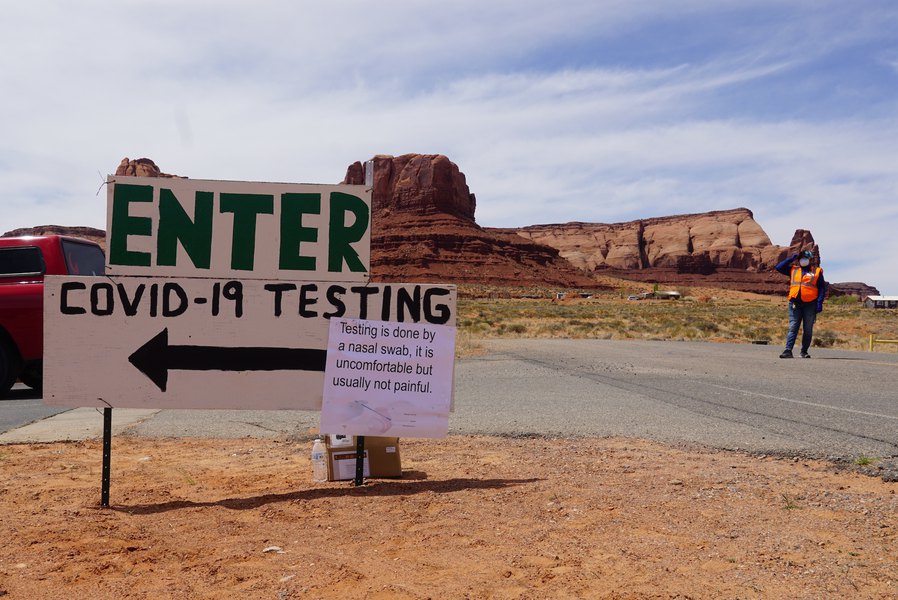COVID-19 As the Next Step in a Half-Millennia of Genocide

The horrifying death rates of COVID-19 on the Navajo Nation have finally gotten the nation’s attention. Native Americans are effectively forgotten about by the nation–even on the left–outside of very specific circumstances. The right is openly racist against them–racism in South Dakota or Montana or Oklahoma toward the tribes is as harsh and murderous as racism in Georgia or Mississippi or Arkansas toward African-Americans. Liberals more or less don’t pay that much attention. The left will pay some attention if there is a pipeline to protest. But it’s not as if Native issues play a large role in our racial politics on the left as a general rule. The lack of jobs, limited educational opportunities, high suicide rates, etc., these are just not issues that we talk about much. That a huge part of the problem is the lack of access to traditional lands and the erasure of culture over centuries makes the issues very difficult and the internecine warfare of tribal politics make contemporary Washington look like a fairyland of cooperation.
It’s really rather surprising that the Navajo Nation has been so devastated by COVID-19, given that it is extremely not densely populated, often with people living very far away from each other. But given that over 30% of the Navajos do not have access to fresh water, they are forced to go to town to get basic supplies and that, combined with a whole lot of co-morbidities that also reflect those centuries of genocide, they have indeed been brutalized. It’s basically an extension of all those centuries of epidemics that have gone far to define Native history since 1492.
Naturally enough, the tribes want to protect themselves. One consequence of the post-60s Native rights movement, beginning with AIM and other freedom movements, is to build up quite a bit of sympathy and understanding in at least some parts of the white population, sometimes backed with real financial resources based on casino earnings, which themselves reflect those growing white alliances given the legal process by which that was developed in the 80s and 90s. One consequence of this is that the states cannot run roughshod over the tribes like they did before. Native legal rights actually get a real hearing.
The South Dakota tribes don’t have a lot of casinos, so they generally lack the money to lead expensive legal fights. But they can block off their reservation to outsiders. And this is infuriating the South Dakota Republicans who hate them.
South Dakota Gov. Kristi Noem on Friday told tribes to take down road checkpoints they had set up to keep out unnecessary visitors because of concerns over the coronavirus.
The Republican governor said she would take legal action if the tribes didn’t remove the checkpoints in 48 hours. Two tribes — the Oglala Sioux Tribe and the Cheyenne River Sioux Tribe — set up the checkpoints last month in an attempt to lock down their reservations amid fears infections could decimate members. The move sets up a potential legal showdown between a governor who has avoided sweeping stay-at-home orders and tribes that assert their sovereign rights allow them to control who comes on reservations.
The tribes have taken stronger action than the state because they are concerned the virus could overwhelm fragile health care systems that serve many people with underlying health problems. They are still allowing essential businesses on to the reservations and said the checkpoints were set up to keep out tourists or other visitors who could be carrying coronavirus infections.
There’s no possible good reason for South Dakota to not let this happen. It’s not as if there are many roads going through these places. As anyone who has been on Pine Ridge knows, you really have to want to get there. Of course, Noem completely caved when her bullying didn’t work.
In the aftermath of this hell, we need to center Native concerns in our politics, both liberals and the left. The article I linked to at the start of this piece is by Wahleah Johns, who works on solar energy projects with his fellow Navajo. He writes:
Today we don’t need handouts from the U.S. government. We need investment in building a restorative economy that is aligned with our traditional values and our relationship with nature.
While interest rates are near zero, we should be investing billions in a Green New Deal for the Navajo Nation to support new infrastructure for clean energy, sustainable agriculture, broadband, education, housing and health care.
The coronavirus has exposed how fragile my home is, but it is also a reminder of what matters. I’m grateful to my great-grandparents for their bold action to hide my grandmother. Her wisdom and knowledge of our ceremonies and language has kept us rooted to Mother Earth. She is 95 years old and is a national treasure. Thousands of elders like her are at high risk for this virus, and we are keeping her out of harm’s way by staying home and wearing masks when we have to go out for food.
Unlike some prominent Republicans who have suggested we could sacrifice our elders to help the economy, we honor our elders and believe all life is sacred.
The Green New Deal makes more sense every day and while claims that Native Americans are “at one with nature” should be received with a giant eye roll, there’s no question that helping Navajos build their own economy based around renewable energy is, simply put, a great idea that we should all support.
Alas, we will probably all go back to forgetting about Native America soon enough.


